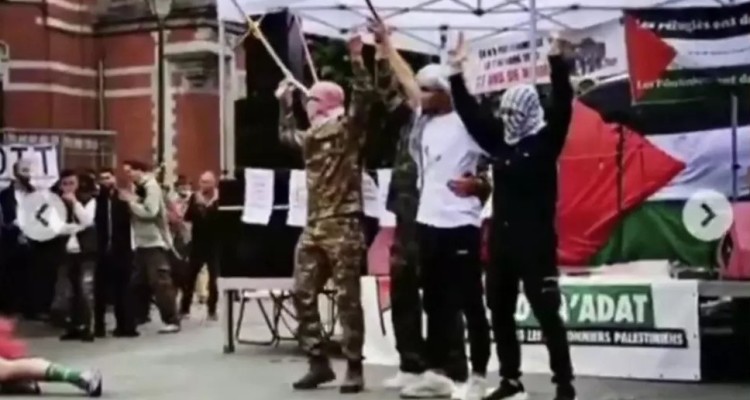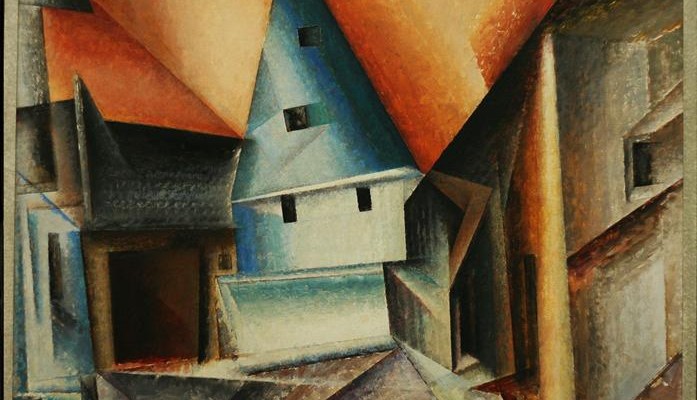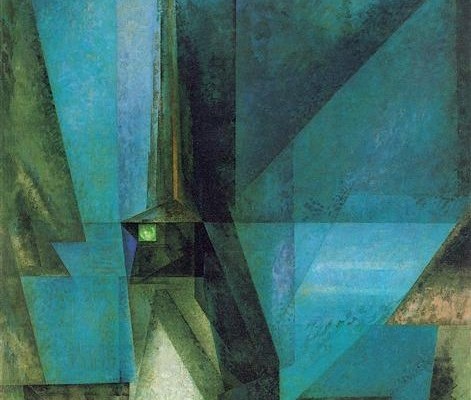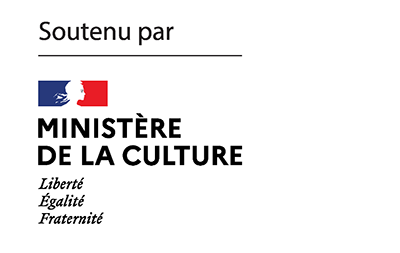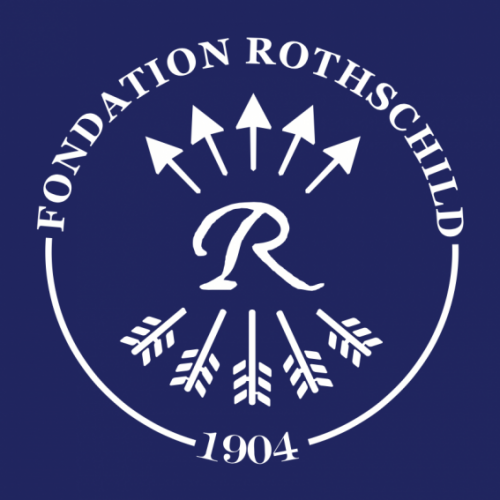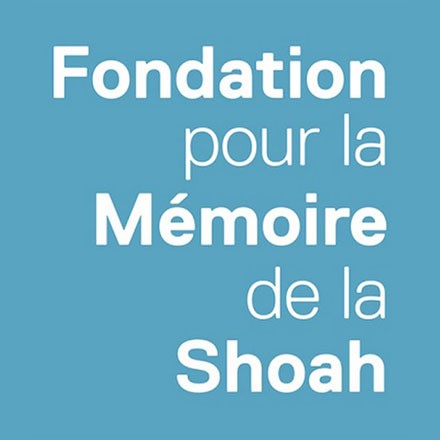What is the “it” whose repetition the slogan “Never again” seeks to ward off? At a time when the use of this phrase is becoming commonplace, to the point where some are turning it against the State of Israel, Danny Trom traces its genesis, beyond the reference to the Holocaust. Questioning the way in which Zionist pioneers appropriated the story of the fortress of Masada’s heroic resistance to the Roman legions, he sheds light on how the slogan relates to the Jewish condition, and how it can still inform our perspective on the current situation.

And if to find atonement I survive
Then answer: Where?
So importuning a silent voice replied:
“In Masada!”
And I obeyed that voice and so I came.
Silent my steps will raise me to the wall,
Silent as all steps filled with the dread
Of what will come.
Tall, tall is the wall of Masada.
Deep, deep is the pit at its feet.
And if the silent voice deceived me,
From the high wall to the deep pit
I will fling me.
And let there be no sign remaining,
And let no remnant survive.
“Never again”. The origin of the slogan is unclear. It is thought to have been first uttered by a group of political internees at Dachau, the epitaph now appearing in large letters on the camp memorial. Or perhaps it was formulated in 1961 in a Swedish documentary on Nazi extermination policy, supported by the public speech of Elie Wiesel and institutionalised by the Holocaust Memorial Museum in Washington. It may even have been launched by Meïr Kahane, then a young radical activist with the Jewish Defense League in New York, who published a manifesto entitled Never again! in 1971. You only have to track down the information on the web to see that all the leads get muddled up. Be that as it may, the motto was everywhere in the atmosphere of the 1960s-1970s, at the same time as the emerging awareness of what was then called the Holocaust before being renamed the Shoah in Europe. Encapsulated in a formula, this historical awareness is therefore a bad conscience, that of Europe for having engendered the crime, that of the United States for having closed its doors to Jewish immigration, and then for having watched the genocide unfold without taking action. What happened must not be repeated, says the motto.
What is the ‘it’ whose repetition must be warded off, it is bound to fluctuate. Since events do not repeat themselves – at the very most they show a family resemblance that allows them to be classified in a more or less extensive category – the vigilant consciousness that seeks to block repetition must draw on the flow of current events to feed its activism. That’s why condemnation of everything from genocidal mass violence to mass killings in schools in the United States invariably ends with the slogan “Never again”. And since evil never ceases to proliferate, “Never again” has become its opposite, synonymous with “always again”. The slogan itself, the way in which it assumes and promotes a grip on reality, with its charge of indignation, logically implies forgetting the ‘it’ whose memory provided the substance. The dilution of the Shoah is the immediate consequence. To this first movement of relativisation has been added a second, underway for decades: the turning of the slogan against the State of Israel accused of genocide, an irresistible slope as soon as the historical guilty conscience finds in it the fuel for its own appeasement. “Never again” is the slogan read everywhere about the war in Gaza, on the understanding that Israel is committing genocide against the Palestinians. So today we have reached the end of a cycle: “Never again” has become a rallying cry, freed from the fate of the Jews and then turned against them, reversed into “always again”, allowing the State of Israel to be targeted while obscuring the nature of the massacre of October 7.
“Never again will Masada fall”
But the phrase, whose first occurrence is hard to identify and whose distribution channels are hard to reconstruct, may well come from another source – also regularly mentioned on the web – that predates the Shoah and the State of Israel, in Mandate Palestine in the 1920s. It appears in the form “Masada will not fall again” (Shenit Metzada Lo Tipol) in the epic poem Masada by Yitzhak Lamdan (1899-1954), a chaptred poem written between 1923 and 1926, then published in full in 1927 by a literary publishing house in Palestine. The author, born Itzik Yehuda Lobe in Mlynov, a village north-east of Lviv, fled the pogroms that multiplied in this war-torn region, joined the Red Army, returned to his ravaged native village, then joined the Zionist-Socialist youth movement and immigrated to Palestine in 1920. A translator of Jack London and Joseph Conrad into Hebrew, Lamdan, now forgotten, acquired immense and immediate fame, both in the Yishuv and in Eastern Europe, when Masada was published, leading him to give up manual labour to devote himself to writing.
After the 1967 war, Masada became a symbol of the small city-state besieged by hostile neighbours, to the extent that the Israeli mentality could be characterised as affected by the “Masada complex”, a mixture of claustrophobia and paranoia requiring urgent treatment.
Written in lyrical Hebrew, this sweeping poem was immediately incorporated into the curriculum of Yishuv schools and the modern Zionist schools of the educational network Tarbut in Poland. Set to music, penetrating the folklore of the Third Aliyah – excerpts from Masada were even embedded in the Passover Haggadah used in the Kibbutzim of the 1930s – the work, and with it its author, sank into oblivion by the very end of the 1950s. All that survived was the slogan “Masada will fall no more“, which can also be translated as “Never again will Masada fall”. But in Lamdan’s poem, the phrase does not take on the unambiguous warlike meaning that is spontaneously attached to it, even though it lends itself perfectly to that purpose. Given that the fortress of Masada, perched on a promontory in the Judean desert, was the supposed site of the last armed resistance, if we are to believe the chronicler Flavius Josephus in The Judean War, which is the sole source of this event, where the last encircled combatants committed suicide.
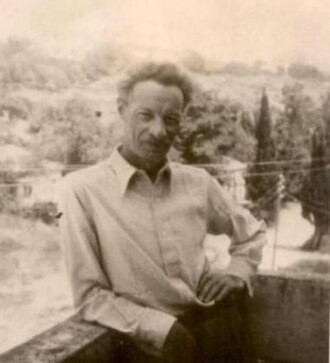
Already in gestation under the Yishuv in the Mandate period, the excursion to Masada became a ritual for the pioneer youth, then for the new recruits to the Tsahal when the State was born in 1948[1]. However, Yitzhak Lamdan himself never visited the fortress, even though the pioneer youth regularly climbed up there to recite excerpts of his poetry. For the site, in Lamdan’s poetry, is a metaphor for the Land of Israel in a period of relative peace guaranteed by the British administration of Palestine. The climate only seriously deteriorated from 1929 onwards, leading to the militarisation of the Yishuv, which the Zionists had refused to do until then. It was only much later, after the 1967 war, that Masada became a symbol of the small city-state besieged by hostile neighbours, to the point where the Israeli mentality could be characterised as affected by the “Masada complex”, a mixture of claustrophobia and paranoia requiring urgent treatment.
For the construction of a national mythology, the heroic conduct of the Zealots entrenched in the fortress of Masada lent itself perfectly to investment. This episode of armed resistance against Rome in 72, two years after the fall of Jerusalem and the Second Temple, predates the conclusion of the biblical narrative and is shrouded in a historical status that is, admittedly, uncertain but firmer than that of the biblical account lost in the mists of time. This is why the myth of Masada was fuelled by the Russian writer and Zionist doctrinarian Micha Berdyczewski from the beginning of the century, with the explicit aim of creating an edifying narrative capable of freeing the Jews from their political impotence. The fact that The War of the Judeans by the Judean war leader Yoseph Ben-Matityahu, alias Flavius Josephus, was translated from Greek into Hebrew for the first time in 1923, testifies to its success in Jewish society in Palestine. The history professor Joseph Klausner at the Hebrew University worked in the 1930s to give this episode a solid historical foundation, before archaeologists, just like Yigeal Yadin in the 1960s, excavated the site to give Masada the material concreteness of a legacy.
In this vein, the slogan “Masada will fall no more” expresses the revolutionary break with the traditional passivity of the Jews, by instilling the conviction that Zionism breaks with it, in the rediscovered continuity of a combative ethos that can still be activated after the long eclipse of a night of misery in exile. Flavius Josephus’ War of the Judeans did not penetrate the corpus of traditional Jewish texts – rabbinic Judaism was born of the option of withdrawing to Yavneh, the first house of study, rather than fighting a losing battle in a starving Jerusalem besieged by the Romans. The armed struggle of the Zealots represented a revolt against the quiescence of rabbinic Judaism, against Jewish powerlessness, and Masada became the emblem of this Zionist rebellion against tradition, against the condition of exile.
The enormous success of Lamdan’s poem Masada with its audience is due to the Zionist reformulation of Jewish hope untied from the hand of God.
Yitzhak Lamdan was resolutely Zionist, but it seems that he drew his inspiration less from the Greek account of the Judean general Flavius Josephus, who indicates that reckless resistance to the Roman occupier by force of arms is futile, than from the Book of Josippon[2], a Hebrew transliteration (Targum) of the same story, written in Italy in the tenth century, a version of the same event that heroes the Zealots who were driven to suicide by sanctifying the name of God (Kiddush Hashem). Since it appeared nowhere in rabbinic literature, the memory of Masada made its way into the Sefer Josippon at the dawn of the Middle Ages, giving the Jewish communities massacred in the Rhine region during the medieval crusades a sense of collective death, including the option of suicide rather than captivity doomed to torture and forced conversion. While it was not until 1923 that The Jewish War was published in modern Hebrew in Palestine, Sefer Josippon had been circulating in Yiddish in Europe since at least the eighteenth century, and probably much earlier.
For Yitzhak Lamdan, “Masada will fall no more” means that the Land of Israel is the final stage in the destiny of the Jews. The poem describes the inner journey of the pioneer, the one who leaves Europe for Palestine, the one who gives up on taking revenge for the pogroms, the one who believed in communism but no longer thinks it will solve the Jewish problem, the one who, stationed on the ultimate historical front for the Jews, refuses to stay put and make do with the precariousness of the situation. For the Jewish pioneer, Masada is “the last frontier” beyond which “there is no way out”, says the poem. For Flavius Josephus, Masada is a defeat, admittedly honourable but unequivocal; for Sefer Josippon, it is a survival in death, and for Lamdan, a survival in national life.
No encirclement by an army produces the trap in which the Jews are caught; it is Jewish history itself that is moving towards its decisive phase, towards redemption or the final catastrophe, between which Lamdan oscillates. It is here that the poet expresses the doubt and anxiety that runs through Jewish society in Palestine in the 1920s. Will inner strength, even self-sacrifice, be able to overcome adversity? This was the question facing the pioneering Jewish society from the mid-1920s onwards. The dreaded failure was not due to Arab hostility to the Yishuv, which was still very low-intensity, but was the result of Palestine being too unattractive for European Jews who were immigrating in other directions, the harshness of agricultural work in Palestine, the economic crisis that hit the newly settled Palestinian Jewish society hard, discouraging the pioneers at a time when Aliyah was stagnating, with arrivals equalling the number of returnees to Eastern Europe.
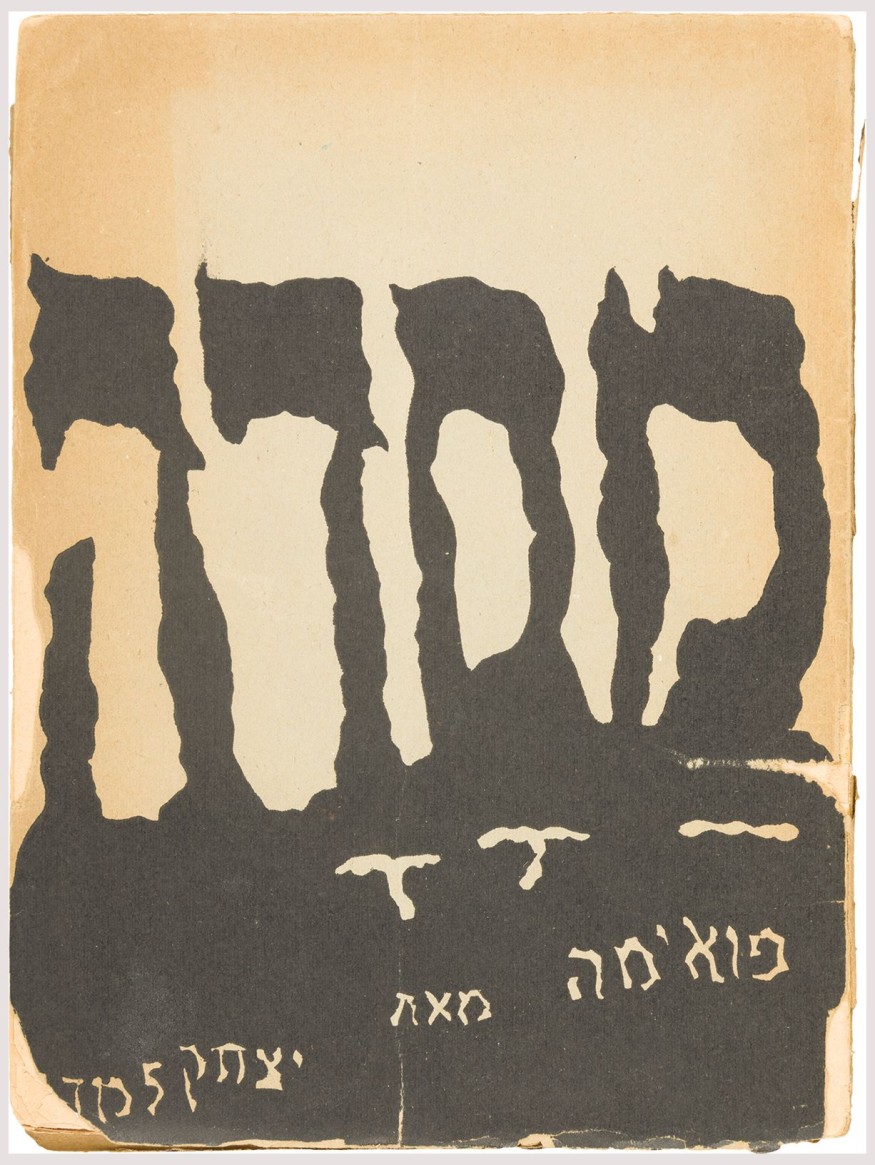
“Lift your legs / Tighten your knees / Over and over again / In the round dance / Masada will never fall again!” The fortress of Masada represents the inner struggle of those who, hand in hand, form a circular chain, fight against the opposing forces of discouragement and individual defection, in order to hold on together, to fix themselves in this ultimate bastion, to cling to it at all costs, when there is nowhere else to go. In this sense, Yitzhak Lamdan’s Masada is positively correlated with the motif of Jewish survival, as is the Sefer Josippon: “Masada will not fall again” means that the Jews, in modern times, will finally escape their persecution, extricate themselves from the European trap where even the Bolshevik revolution turned against them, by making themselves masters of their own destiny. Secular and socialist though it may be, Masada borrows traditional Jewish tropes to describe the pioneering Zionist experience as the Jews’ path to the ultimate denouement of their history, since passive resignation while awaiting the redemption of the people in exile, by God or by the Communist revolution, are all dead ends.
The slogan “Never again” thus finds its matrix in Lamdan’s description of the existential situation of the Jews, at a time when the final battle is being anxiously fought on the home front of Jewish destiny. The sacrifice of the Zealots is not an allegory of the battlefield, as it would later be for the pioneer-fighters of the Palmach, the armed wing of the Yishuv in the 1930s and 1940s, but an image of the refusal to back down, of the capacity to endure, of the tenacious collective will to achieve the project that superimposes socialism and the rebirth of the Jewish nation. At the end of this road: the sanctification of the name of God in the language of Sefer Josippon and, in that of Lamdan, redemption in the Land of Israel, if not emptiness. Lamdan’s enormous success with its audience lies in its Zionist reformulation of Jewish hope untied from the hand of God.
But it was perhaps the echo of the Warsaw ghetto uprising in 1943, which reached the Yishuv in the middle of the war, when the destruction of the Jews was in full swing, that once again changed the meaning of the slogan “Masada will fall no more”. This was to have a lasting impact on the national ethos of the nascent State of Israel in its relationship with the Jews of Europe, combining in a singular experience the revolt in the ghettos, and therefore the struggle of the Jews of Europe for their survival, and that of the Yishuv, which feverishly watched the advance of the Wehrmacht towards Palestine as it prepared for battle. From the moment it was born, the State of Israel glorified the fighters who fought to the bitter end with the energy of despair in the besieged ghettos, the mirror image of those who perished passively, promising that Masada would never again fall. So the State of Israel understood itself, and was understood, as the institutionalisation of the ” Never again ” slogan, combining the front line of the history of European Jewry, which collapsed in the Shoah, and the guardian state of the Jewish people, its last bulwark. What must not be repeated here is the Shoah, understood as a metaphor for inaction, for the inability to effectively confront the enemy. This is the now stabilised meaning of the phrase “Masada will fall no more”: the “it” that must never happen again is the powerlessness of the Jews, simultaneously transfiguring the State of Israel into a State of the aftermath, a device affected by the unfortunate awareness of having been born too late.
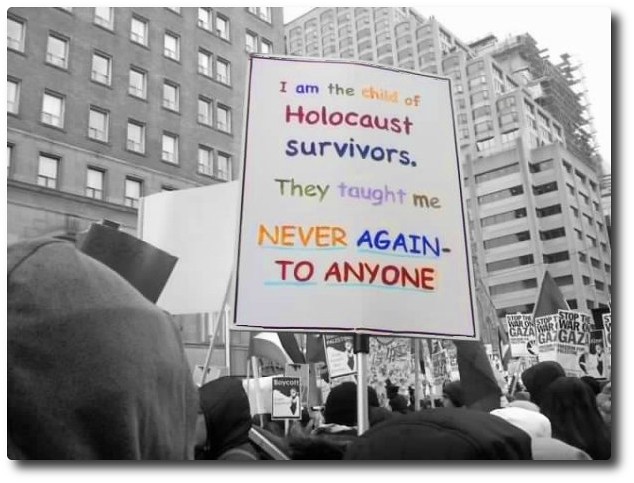
“Never again” turned into an indictment of the State of Israel…
The slogan “Never again”, which now permeates the modern post-Shoah consciousness, may well have its source in the gradual implementation of the most tangible device designed to render the event non-repeatable, this time taken in its strict sense. Turned into an accusation against the State of Israel even before the start of the IDF’s military response to the aggression of October 7, it takes on the appearance of a chiasm of which we, the Jews of Europe, are now prisoners, as if “Never again” implied that Masada would fall a second time. The twisting of historical consciousness at work here is therefore highly singular: the erasure of the Shoah, in the form of denial or relativisation, makes any antisemitic intention inaccessible, for what it is and wherever it comes from, to this common historical consciousness encapsulated in the slogan “Never again”.
The quasi-messianism of the myth of Masada is taken up today by religious Zionism, which has freed it from its universalist mantle and thus from the European Zionist spirit, by combining it with a cult of the State and the conquest of the sacred land.
The question then arises as to which stratum of elaboration around Masada still communicates with our current situation. A by-product of Jewish political history, Lamdan’s “Never again” expresses the quasi-messianism of the socialist pioneers, which is clearly no longer relevant. The constellation that made Zionist achievement the ultimate bastion of Jewish history – a vision that Lamdan’s poem Masada embodied at a time of great precariousness – has long since faded away. The kind of ultra-activism that correlates with the myth of Masada no longer appears to Israelis themselves as anything more than an old-fashioned patriotic cult, and the whole pompous folkloric panoply that surrounds it as a mass of kitsch of which Lamdan’s Masada was a centrepiece. Today, this quasi-messianism has been taken over by religious Zionism, which has freed it from its universalist mantle and thus from the European Zionist spirit, by combining it with a cult of the State and the conquest of the sacred land without any other considerations. While it is true that the escape from Jewish history gave Lamdan’s “Never again” a messianic tone, it remained in minor mode, subdued, all restraint, since Lamdan, as Herzl had done thirty years earlier, traversed in Masada the arc of political solutions to the Jewish problem in Europe before finally opting for Zionism : His last frontier, in the 1920s, was initially the least bad solution, the only viable one, and therefore the last, before being positively taken up as the best.
In the post-Shoah era, however, what has proved enduring in Lamdan’s “Never again” formula is that the State of Israel is the bastion where Jewish survival finds its most tangible realisation, but in a world where Jews nevertheless endure in Europe or elsewhere, something that the Zionist doxa with its quasi-messianic overtones ruled out. It follows that, since 7 October, it is precisely the buried source of Yitzhak Lamdan’s “Never again” that has resurfaced, since the pogrom is no longer simply what dominates the European political condition that the poet was fleeing, but the breach in the citadel through which the Jewish experience resurfaces in the shelter state. This is why, with 7 October, the “Never again”, here too, was effectively reversed into an “always again”, but an always again strictly the same thing, despite the solidity of the device designed to make the fall impossible.
And Lamdan’s Masada is still relevant today in another way, in the form of the will to hold firmly to an achievement now threatened by discord – on that inner front of the pioneers that gave the State of Israel its singular form, where the shelter of the Jews and the spirit of justice could find their point of junction. The breach made in the fortress on October 7, and the war that is still going on, have momentarily overshadowed the other breach, of a different order, made by the current government of the State of Israel, for whom Masada is nothing more than an offensive policy, geared towards conquest. On this fault line in Israeli society hovers the risk of discouragement and demoralisation of the opposition, as it haunts Lamdan’s poem: is this not also what threatens the current mobilisation to safeguard the State of Israel in its canonical form, as formulated in its Declaration of Birth, which we hold dear? And don’t we feel Yitzhak Lamdan’s oscillation between redemption and final catastrophe, the vertigo he experienced from the top of Masada which he never climbed?
Danny Trom
Notes
| 1 | On the memory of “Masada”, see Barry Schwarz, Yael Zerubavel, Bernice M. Barnett, “The recovery of Masada: A study in collective memory”, The Sociological Quarterly, 1986/2, p.147-164. |
| 2 | This was emphasised by Yael Zerubavel, then developed by Yael S. Feldman, “‘The Final Battle’ or ‘A Burnt Offering? Lamdan’s Masada Revisited”, AJS Perspectives, 2009, p.30-2. |
